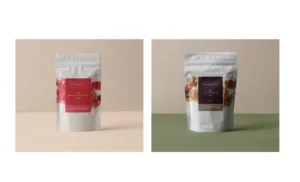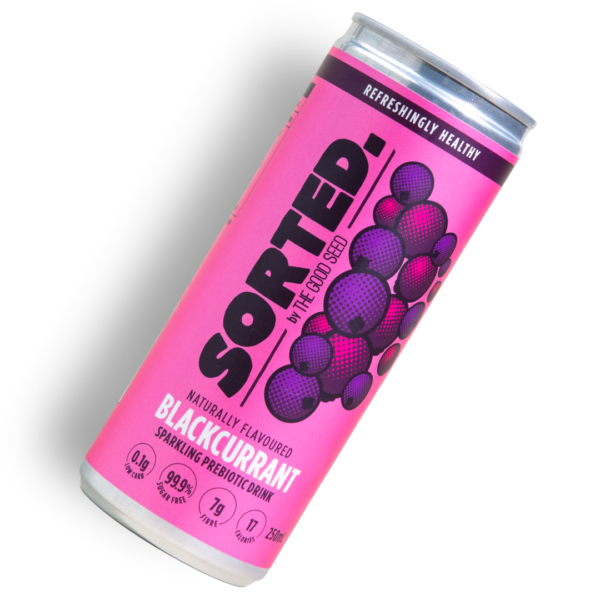The human gut is made up of ten trillion bugs – bacteria, viruses and fungi, which weigh over one kilo and outnumber human cells in your body by a ratio of over 10:1. A little hard to wrap your head around, I know, but when you consider the complexity of it all, there is no underestimating the importance of looking after your digestive system and the inner gut microbiome. More and more research continues to unveil the intricate link between our microbiome and our overall wellness including immunity, inflammation, mood, and our skin.
Your outer glow is a reflection of how your gut feels, so it’s crucial to know what can be done to maintain a balanced microbiome. A healthy gut contains a spectrum of microbial species, with those known as Firmicutes and Bacteroidetes accounting for more than 90% of all your gut microbes. When this bacterial ecosystem is upset it results in an imbalance which can manifest in ways including: decreased immunity, sluggish metabolism, lower levels of synthesis of the feel-good hormone serotonin, as well as inflammation, allergies, and fluctuated hormones.
For your skin more specifically, this can appear via:
- Acne (based on a predisposition to the condition)
- Skin redness
- Rosacea
- Eczema
- Accelerated ageing
Additionally, when there is an upset in the gut, inflammation and mal-digestion quickly follow. This typically presents itself via low levels of energy, while wreaking havoc on the gut (bloating, constipation, diarrhoea, flatulence etc.). Essentially, it means you are not absorbing all the nutrients required from your food, critical for nourishing your body and maintaining essential energy for that inside-outside glow.
When the ratio of bad bacteria outweighs the good, processed foods and sugars tend to fuel the fire more. Avoid any overconsumption of snacks that fall within this pillar of produce as additional toxins can leak through the skin causing breakouts (cystic or otherwise), as well as heightened sensitivity.
As a naturopath, I am always seeking ways in which my clients can find a healthy gut balance. There are a plethora of products on the market today designed to ‘heal’ the gut lining, but few are targeted at weeding out the bad to make way for more of the good gut bacteria. Antibiotics for example, whilst sometimes needed to support general health, often exterminate both good and bad bacteria without replenishing the loss.
Polyphenols are the shining light! In my mind, they are the missing link to achieving a flourishing gut microbiome. Found within the peels, skins, and seeds of most fruit and veg, their restorative power has for some reason been eradicated from the modern western diet. Polyphenols contain mild toxins which in nature repel bugs and insects from natural sugars, but in our belly, they work to stave off bad bacteria, while simultaneously providing good bacteria with a healthy environment to grow.
When conceptualising my holistic beauty brand, Edible Beauty, I wanted to really drive home the message that beauty is built from within, both literally and metaphorically. Inner wellness interprets your outer glow, which is why our natural beauty skincare products and dietary supplements take a holistic approach to curing your complexion concerns. Our Gut Replenish powder contains polyphenol-rich superfoods such as cacao, carob, berries and grape seeds. These compounds provide a balancing-biotic™ function in the digestive system, not only replenishing but also restoring the harmony of your gut bacteria ratios. If you have tried other digestive supplements with lacking results, polyphenols may be the missing ingredient your gut is craving, in order to restore balance.
On the subject of diet, there are a few key ingredients that when incorporated more frequently into your diet, ensure that the good bacteria is being nourished. These include:
- Kefir – this fermented drink is packed with a specific type of good gut bacteria. The word kefir literally means “feel good” and it makes your gut do just that choosing a dairy-free and sugar-free is key which is why I love the Good Seed Kefir.
- Miso – a staple in Japanese cooking, Miso is a fermented enzyme-rich condiment that is a fantastic source of trace minerals like manganese, zinc, and vitamin K. The fermentation process means it supports healthy digestion and immunity. It also makes for a very tasty marinade on tofu and or salmon.
- Sauerkraut – a great source of probiotics, fibre, and vitamins, this fermented chopped cabbage is delicious as a condiment and helps to curb sugar cravings.
- Kimchi – another form of fermented vegetable, this Korean side dish holds a bit of spice, which means it provides a great boost to circulation, though delicious when served in salads and soups.
- Almonds – high in fibre, full of fatty acids, and packed with polyphenols, a handful is a perfect treat for when you’re feeling peckish.
- Olive Oil – with proven benefits to help gut inflammation and ease an upset stomach, drizzle olive oil on your salad as dressings or over roast veg.
If you’re wanting to dig a little deeper, here are my top five tips for creating long-lasting radiant skin, while boosting good gut bacteria:
- Eliminate triggers. There are certain foods that can be beneficial to eliminate from the diet when managing redness. Avoid citrus, cheese, nightshades, alcohol, chocolate, yeast and vinegar. These foods can cause a histamine reaction, leading to dilated blood vessels, a red complexion and skin irritation. Avoiding spicy foods is also a good idea! Spicy foods promote heat in the body, leading to flushing and redness. If you are experiencing any redness-related skin conditions, it is best to avoid these in your diet altogether.
- Say goodbye to refined sugar and dairy. Dairy contains lactose, a sugar that is often unable to be digested as most of us do not produce the enzyme lactase to break it down, resulting in fermentation. Eventually, this leads to gut inflammation. Proteins found in gluten can irritate the gut, resulting in gut permeability. When this happens, food proteins leak into the bloodstream, paving the way for allergies, auto-immune disease and low mood. Sugar and processed foods feed the bad guys and deplete our gut and body with precious minerals and nutrients needed to heal and repair our gut lining.
- Focus on friendly fibre. Aim to have at least 30 grams of fibre daily. This ensures you are sweeping away toxins and bad bacteria. Take care to not consume fibre-rich foods such as wheat bran, fructooligosaccharides (FOS) and galactooligosaccharides (GOS) which promote a large amount of gas production in the large intestine. The best sources of fibre to enjoy include flaxseed meal, oats and chia seeds (soaked).
- Supplement. Supplementing gives your gut-healing diet a boost and ensures that you are doing everything you can do to repair and seal your gut lining. My favourite gut-healing supplements:
- Edible Beauty’s Gut Replenish Powder– 1 tablespoon daily, polyphenol-rich superfoods in this powder help to balance gut bacteria and soothes and calm the gut lining
- Edible Beauty’s Native Collagen Powder – 1 teaspoon daily, Vitamin C found in this powder helps to boost skin capillary strength and immunity to reduce skin flushing and redness.
- Aloe vera juice (find a preservative-free brand) – 50ml daily, soothes and supports gut lining.
- Enzymes (containing protease, amylase, lipase) – take 1-2 capsules or as recommended by the product manufacturer with each meal.
- Boost Fatty Acids. Foods rich in omega-3 fatty acids may prevent skin reddening and reduce skin and gut inflammation. Aim to have at least 2 tablespoons of flaxseed oil daily. Adding other healthy fats such as avocado and walnuts to your diet is also a good idea.
The skin, our largest organ, is really a mirror of what is happening within, specifically our gut. Adjust your diet, monitor your complexion, and use topical treatments that calm and soothe.
ABOUT ANNA MITSIOS
Being diagnosed with type 1 diabetes at 18 marked a real turning point in Anna’s life. She began to search for natural solutions – nutrition and herbal remedies – to help manage the autoimmune condition. While working in corporate finance in Sydney and New York, Anna also took up studies in naturopathy; a step towards making her passion her career.
Working as a naturopath in a Sydney fertility clinic, I was fed up with the lack of skincare that was safe and clean, especially for pregnant women. So, in 2014 I created a range of products – using Australian botanicals and luxury ingredients – that is so pure you could eat it. After hours of research, cosmetic chemist meetings, more study, and formulating samples, Edible Beauty was born in Anna’s garage! In 2014 she was stocking the shelves at Sephora Pitt Street, when the store first opened, and within two months Edible Beauty was being sold internationally.
ABOUT EDIBLE BEAUTY
Edible Beauty Australia is a holistic solution to skincare and wellness that addresses the need for an inside and outside approach. True beauty means more than simply looking good, it’s about caring for the health of your body, mind, and environment.
Using sustainable, wild-crafted botanicals, and exotic ingredients, our range is entirely Australian-made, vegan, and gluten-free. Limiting your exposure to synthetic and toxic chemicals is important to us, so we’ve ensured our packaging is 100% recyclable as well. Throughout the skincare and ingestible range, there are no: parabens, sulphates, phthalates, artificial preservatives, petrochemicals, or aluminium.
For skincare that’s good enough to eat, visit the Edible Beauty Australia website at www.ediblebeautyaustralia.com to harness the healing power of nature today.






